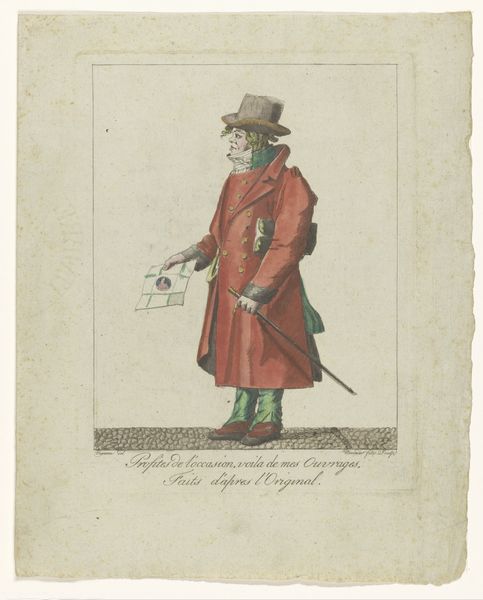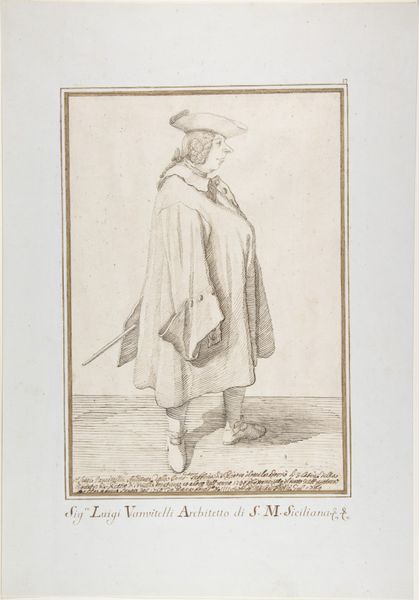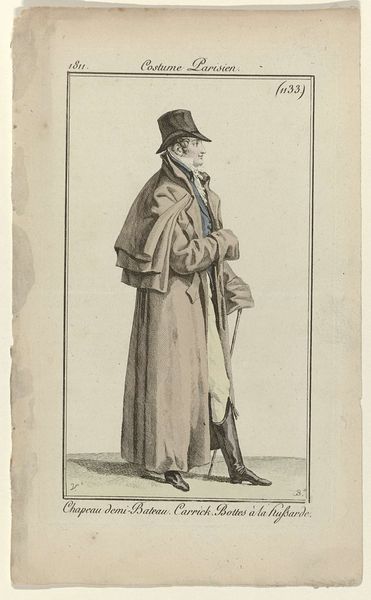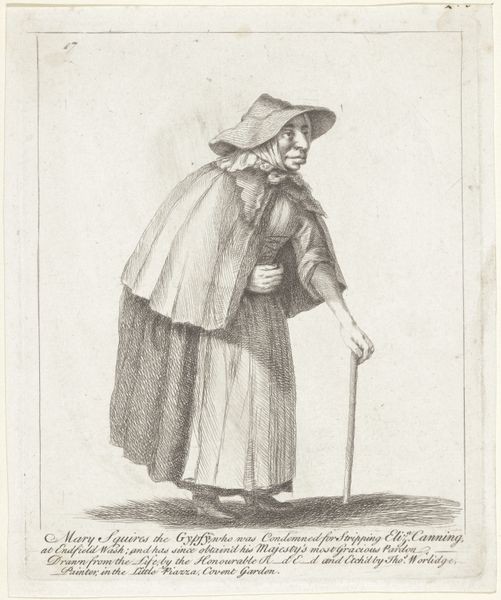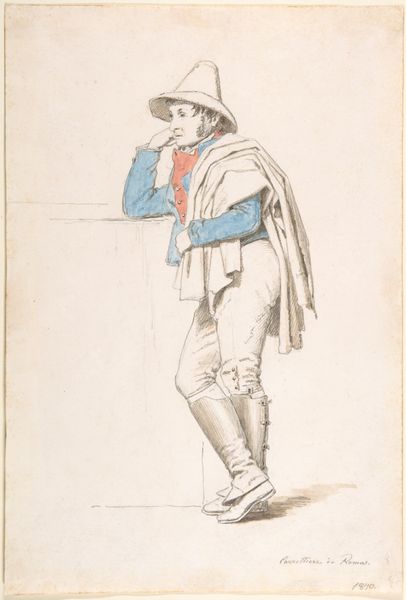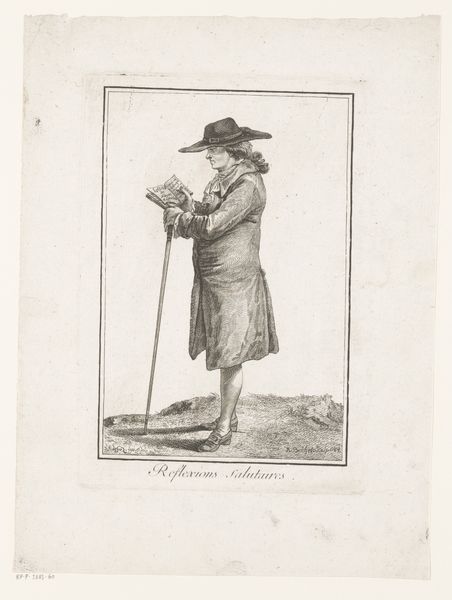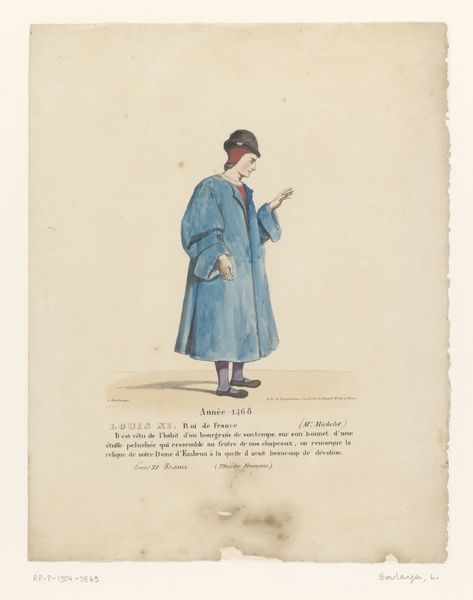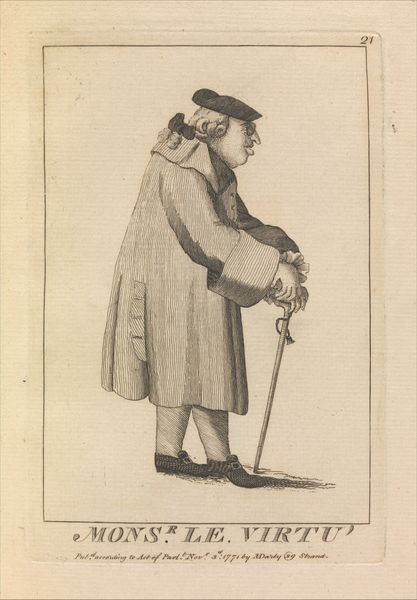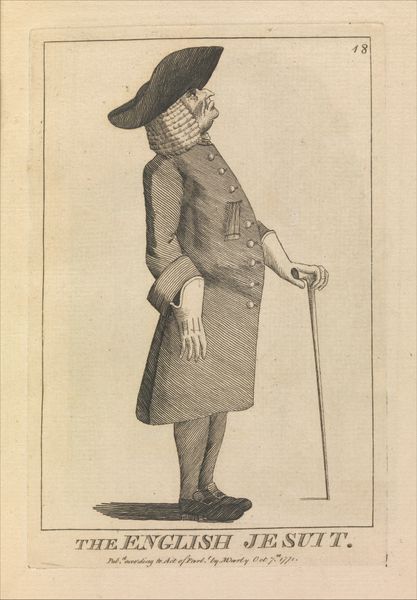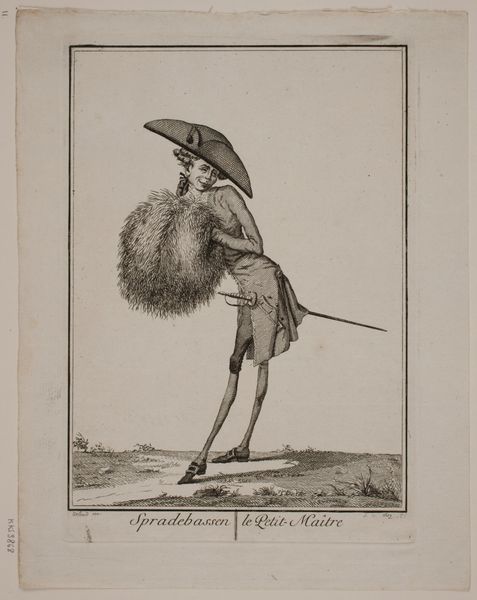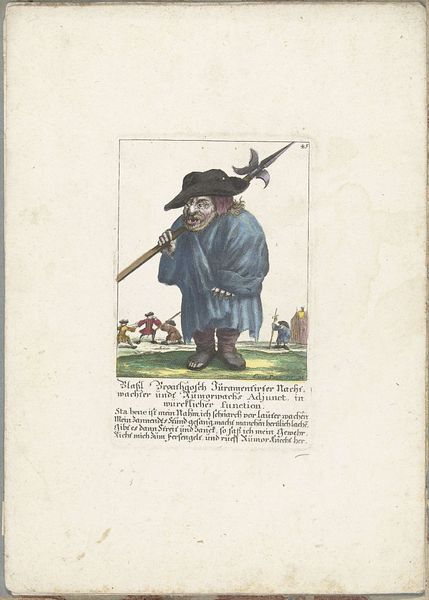
Gallerie des Modes et Costumes Français, 1780, ee 171 (bis) : Manteau a l' Italienn (...) 1780
0:00
0:00
Dimensions: height 281 mm, width 196 mm
Copyright: Rijks Museum: Open Domain
Editor: So, here we have "Gallerie des Modes et Costumes Fran\u00e7ais, 1780" by J. Pelicier, a watercolour illustration, print, and engraving. It feels like a fairly straightforward fashion plate, a simple portrait really. What do you see in this piece? Curator: It's precisely *because* it appears "straightforward" that we should look deeper. The "simplicity" masks a complex network of labor and consumption. Consider the production of the *manteau a l'Italienne* itself: the weaving of the fabric, the dyeing process, the labour of the seamstresses. Each step carries social meaning and economic weight. Editor: I hadn't thought of it that way. It makes you wonder about the social context surrounding each step of the clothing production process, beyond just the final consumer, I mean, who *made* the fabric? Curator: Exactly. And who was *intended* to consume these images? These fashion plates served a crucial function: promoting and dictating trends among the elite, fueling consumption. Look closely at the details –the precise rendering of the fabric’s drape. It’s a visual advertisement, promoting a specific ideal and thus maintaining hierarchies through material goods. What statement do you think this specific color is making, being chosen at all? Editor: It feels a bit more powerful now, beyond just "pretty clothes." It shows the labor and economy surrounding fashion. The material says so much about wealth and taste, it makes me rethink these portraits and images of that era. Curator: Absolutely. The plates were meant to circulate. Each element from hat, hair and drape served as propaganda through fashion. It served not only for style, but to make statements to the viewer through social standing. The power and labor are deeply intertwined with the purpose of the artwork itself, shaping desire, social identity, and the material realities of 18th-century France.
Comments
No comments
Be the first to comment and join the conversation on the ultimate creative platform.
